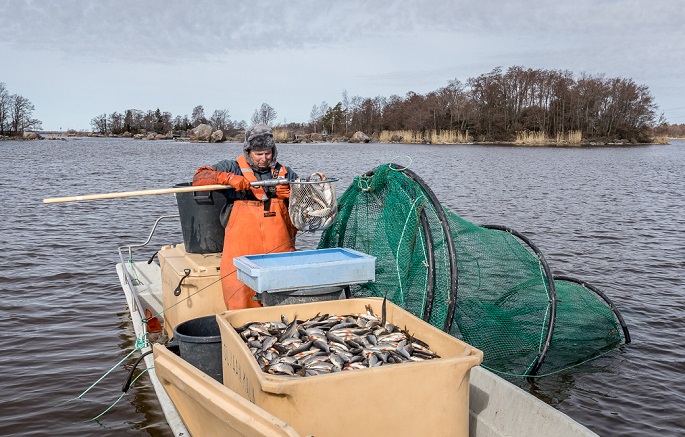Marine fishery catch on wane
Published : 26 May 2023, 04:52
Finland’s commercial marine fishery catch amounted to 87 million kilos in 2022, being 11 million kilos lower than in the year before, said the Natural Resources Institute Finland (Luke) in a press release on Thursday,
The catch mainly consisted of Baltic herring caught offshore by trawling, the catch of which decreased for the sixth year in succession.
In coastal areas, fishers mainly deployed gillnets and trap nets. Catches of many species in coastal fishery were lower than on average in the 2000s. Perch and vendace were exceptions, with their catches being larger than normal.
According to the statistics of Luke, last year’s Baltic herring catch totalled 68 million kilos, being nine million kilos lower than in the year before. The sprat catch was 13 million kilos, a million kilos less than in the previous year.
To ensure sustainable fishing, catch quotas have been set for the most commercially important species. Country- and fishing area-specific quotas are agreed in the EU.
In Finland, a Baltic herring quota has been set for two fishing areas. Of the quota set for the Gulf of Bothnia, roughly 60 per cent was utilised in the previous year, while the full quota was reached in the Gulf of Finland and the Baltic Proper.
The sprat quota was also utilized in full. Slightly more than half of the salmon quota was reached, totalling a little more than 20,300 fish, and three quarters, or 30,000 kilos, of the cod quota was utilised.
“A fifth of the Baltic herring catch and half of the sprat catch were landed abroad, in Sweden, Estonia or Denmark. A fifth of the Baltic herring catch landed in Finland was used in food production, whereas the rest was used as foder or as raw material for fishmeal. Of the sprat catch landed in Finland, 99 per cent were used as foder,” said senior statistician of Luke, Pirkko Söderkultalahti.
In addition to the quotas, the catch was affected by the state of fish populations, fuel costs, demand for fish, disturbance caused by seals and cormorants, and the fishing effort. In the 2000s, the number of fishing days, taking into account the number of days and the quantity of gear, has nearly halved in trap net fishing and trawling, and has decreased to a third in gillnet fishing and to an eighth in long line fishing. The number of active commercial fishers also decreased: last year, a thousand commercial fishers filed catch reports, down by half from the beginning of the 2000s.
Although the catch decreased from the previous year, its value remained at EUR 28 million calculated based on tax-exempt producer prices of fish. Financially the most important species was Baltic herring (EUR 15.4 million), followed by sprat (EUR 3.1 million).
Perch had the third highest value (EUR 2.4 million) with a catch of a million kilos. It was followed by European whitefish (0.3 million kilos), vendace (0.5), salmon (0.2) and pikeperch (0.2). The vendace catch was the largest since 1980. In addition, the perch catch was above the long-term average (1980–2021). Catches of European whitefish, pikeperch and salmon remained below the average.
In 2022, producer prices for many fish species increased. The producer price of gutted salmon increased most, for which commercial fishers were paid EUR 9.25 per kilo on average, up by 44 per cent from 2021. The producer price was EUR 0.36 per kilo for Baltic herring for human consumption, EUR 0.20 per kilo for industrial Baltic herring, and EUR 0.23 per kilo for sprat.
Of key species in coastal fishery, the producer price increased by six per cent (EUR 2.54 per kilo) for perch, 13 per cent (EUR 5.8 per kilo) for gutted European whitefish, 15 per cent (EUR 7.04 per kilo) for pikeperch, and 12 per cent (EUR 2.19 per kilo) for pike. The producer price of burbot decreased by three per cent to EUR 4.94 per kilo. The producer price of farmed rainbow trout (gutted) was EUR 6.58 per kilo, up by 27 per cent from the previous year.
“Producer prices for species other than those with a catch quota are not fully comparable with the previous years, as the central control register for commercial fisheries provided more comprehensive information about the first purchases of such species than previously. This had a particular impact on prices for species of which a significant proportion is sold for industrial use, such as bream and vendace. For vendace, the producer price of whole fish does not directly indicate the income earned by commercial fishers, as vendace fishing in the Bothnian Bay is largely based on valuable roe,” said senior statistician Miikka Husa.


